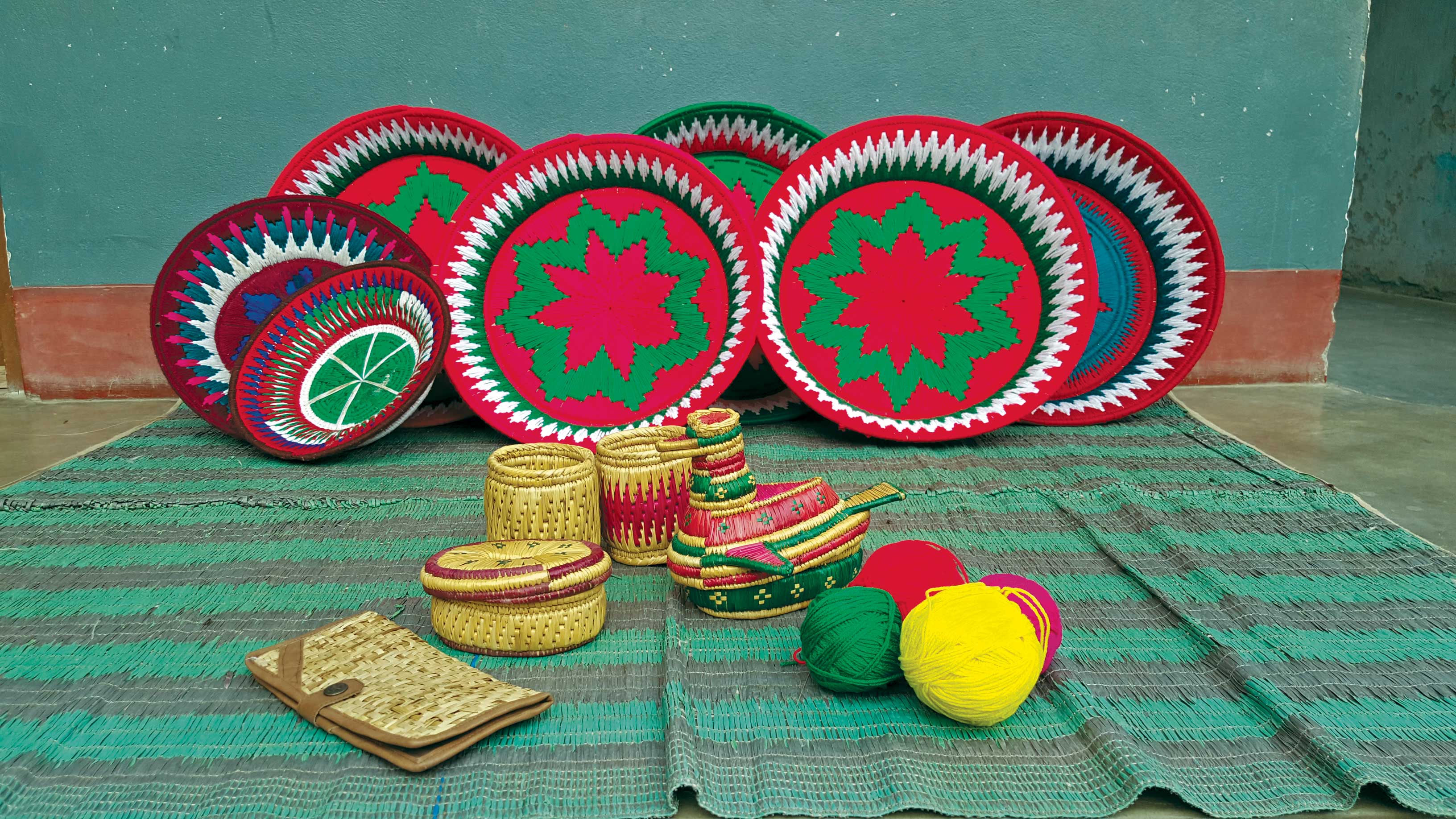“Shashi Shah’s art reveal an unchallenged mastery of line and form. His early drawings in pencil, pen and ink reveal the power and force of his lines. Even his early wash paintings tell the story of a restless and sensitive artist, seeking to give an evocative voice to the injustices and inequalities of life...”- Sangeeta Thapa
A contemplative Shashi Shah was sitting on a Chinese wooden chair, holding a pipe to his mouth as puffs of smoke slowly rose to the ceiling. The renowned artist seemed lost in thought as we entered the Siddhartha Art Gallery, one sunny morning. He woke up from his reverie as he saw us, and a welcoming smile spread across his gentle face. Shah belongs to the old school of brooding, sensitive and totally focused artists, unlike the new breed. He is a man of few words and needs a fair amount of goading to get more than a few sentences out of him. “So you’ve come,” is all he said.
A retrospective exhibition showcasing his forty-year collection of art works is being held at the Siddhartha Art Gallery and closes 20 April 2007. It’s a formidable collection that swamps the gallery, filling two floors, a corridor and an art shop on the way in. The collection goes back to the time Shah was a student in Bombay (now Mumbai) and traces his career through the forty years. His brilliance comes through in his painting of horses. For the last twenty-two years he has almost exclusively painted horses. The obvious question comes up—why horses? He replies, “Horses symbolize POWER and Action.” He puts special emphasis on ‘power’. That alone seems to fascinate him and has turned into an obsession. Even his sculptures depict horses. “Surya (the Sun God) is pulled by seven strong horses,” he adds to stress the point, giving us a clue as to where he derives his inspiration. In fact, in some of his paintings you will find seven powerful, energetic horses at full gallop. They have a powerful impact. Some of his paintings show amazing texture, drawing much praise from fellow artists.
Born in Bhote Bahal, Kathmandu in 1940, Shahi Bikram Shah spent his early childhood studying in the Durbar School opposite the Rani Pokhari. “I used to doodle as a kid and took up art seriously from 1950 onwards. At school, we could take up art as an optional subject, which was very encouraging for someone like me,” recalls Shah. It obviously laid the foundation for his future as an artist, and his teacher, Tej Bahadur Chitrakar reinforced his love for art. It was a time when art in Nepal meant replicating what one saw and was yet to modernize. But all this was soon to change for Shashi Shah. He won a scholarship and joined the prestigious Sir J.J. School of Art, Bombay in 1961 and completed his art studies in 1966. “Laxman Shreshtha had already graduated from the J.J. when I arrived, and Ramananda Joshi was three years my senior,” recalls Shah fondly. There in the J.J. School, the art was influenced heavily by western art unlike other schools in India, and a whole new world had opened up for the budding artist.
His early works on returning to Nepal, include etchings which are being exhibited at the Siddhartha for the very first time. “I’ve lost the plates,” the artist claims ruefully. He also went through his pen and ink phase and experimented by collaborating with a poet who wrote his poetry on the drawing paper over which Shashi Shah made his sketches. It was a period when his paintings had almost surrealistic themes. His strengths are anatomy, composition and creativity. In 1968, he exhibited his works in a solo exhibition at NAFA.
Shashi Shah’s contemporaries were Krishna Manandhar, Indra Pradhan and Batsa Gopal Vaidya, all of whom graduated from J.J.School of Art. In 1971, the four artists joined forces to form SKIB (Shashi, Krishna, Indra & Batsa), an association of artists which had a major impact on the art scene in Nepal. At a time when few art exhibitions were held in the capital, SKIB consistently held one each year for the next twenty-two years. “It was only after Indra Pradhan passed away, that we lost steam and slowly drifted apart,” informs Shah.
In 1970, Shah went back to India, this time to New Delhi where he took a short course on Graphics at the Tiveni Kala Sangam. It was a good year for the artist as his paintings were selected for an Art Expo in Japan and he also won 1st Prize at the National Art Exhibition back home in Kathmandu. At the time Shah was playing an important role in the field of art as a member of the Executive Committee of NAFA. In 1971, he held a solo exhibition of his paintings and drawings at the Tiveni Kala Sangam and received good reviews in the Indian dailies. Then in 1979, he was awarded the prestigious Indra Rajya Laxmi Award in contemporary art.
The artist went on to establish his own institute, the Srijana College of Fine Art, named after its forerunner, the Srijana Contemporary Art Gallery. The college has recently moved to a new location in Lazimpat opposite the Royal Palace northern wall. In his many years as an artist, Shah has not only dedicated his time to painting but has also been ensuring that his knowledge is passed on to the future generation.
In 1985, Shashi was reminded of his childhood problems, when he suffered a setback with his hearing. The problem was augmented by glaucoma and failing eyesight, but he refused to give in and continued painting. It was around this time that he delved into Hindu mythology painting the ten incarnations of Vishnu entitled “Das Avatar”. He combines the traditional with the modern. He overcame his health problems just as his supreme horses seem to overpower chaos and destruction and come out victorious.
His last solo exhibition was held in 2001 also at the Siddhartha Art Gallery. Shah works in mixed media, but shows a preference for acrylic and thrives on surreal art. Recently, he surprised art lovers by doing a series on people. “This was in 2004. I wanted to try something different,” he admits. The same year he went with curator, Sangeeta Thapa of Siddhartha A. Gallery to Pakistan for an exhibition of SAARC artists under the banner “Old Masters Young Voices” at the Alhamra. The artist was pleased to have his art appreciated by total strangers in a foreign land.
The 2007 retrospective exhibition is a revelation and we discover a side of Shah we had not known before. Among the paintings exhibited at the Gallery, the watercolors go back to Shah’s college days and were painted in Bombay in 1966. Since then, Shashi Shah has come a long way, finding his own niche in the art world. Today, he is one of the most respected artists in Nepal.

Buniya to Kick- start Shri Panchami
Buniya To Kick-start Shri Panchami Every year, on the day of Shri Panchami (Basant Panchami), I remember waking up...









